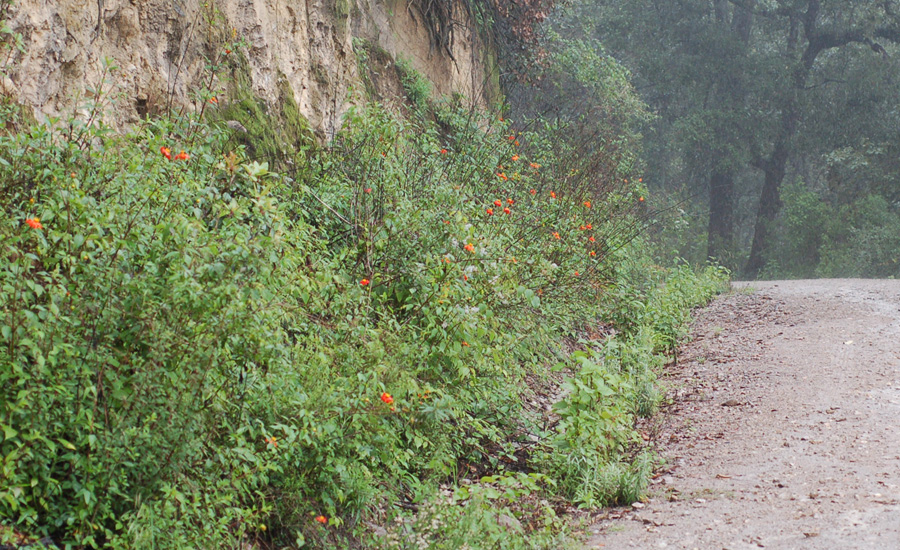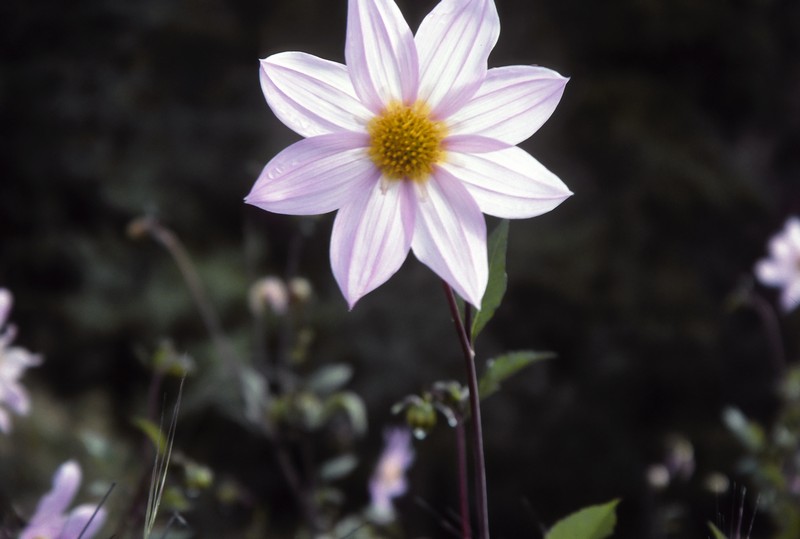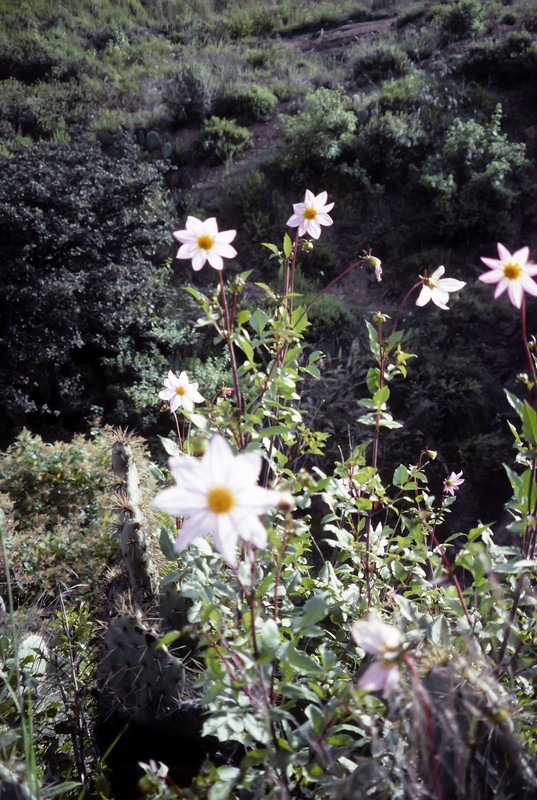
 D. neglecta at the type locality near Tulancingo, Hidalgo, Mexico.
D. neglecta at the type locality near Tulancingo, Hidalgo, Mexico.This previously undescribed species was collected on 11 September 1995, NE of Tulancingo, Hidalgo, in a zone of Quercus (oaks) and arborescent Opuntia (tree-like/size cactus), at an elevation of 2,320 meters (7,612 feet). It was sampled along a large gully or ravine as it crossed under the highway. Just prior (SW) to this site, many plants were observed near the bottom of a long steep embankment created to raise the road grade. A second population was observed and sampled south of Mineral del Monte, Hidalgo, at 2,800 m (9,186’) elevation, in a zone of Cupressus (cypress) with scattered scrubby Quercus along a roadcut with dense vegetation on a SE-facing slope (Saar, 2002).
Individuals of the herbaceous Dahlia neglecta D.E. Saar are perennial from tuberous rootstock, up to 1.5 m (4.9’) in height, with glaucous, hollow internodes and solid nodes. The largest flower heads, including ray florets, are 12.5 cm (4.9”) in diameter. Ligules are light lavender with darker veins on the abaxial (lower) surface and a spot of yellow at the base on the adaxial (top) side. Ligule tips are often cuspidate, and the tips on plants grown in cultivation sometimes twist slightly (DES, personal observation). Flowering in its native habitat begins in August and continues to late September or into October (Saar, 2002).
 D. neglecta at the type locality near Tulancingo, Hidalgo, Mexico.
D. neglecta at the type locality near Tulancingo, Hidalgo, Mexico.Plants grown in cultivation from seeds collected at the type locality are prone to powdery mildew. Although this species has been identified from more than one population, only the type population is known to have been cultivated. Therefore, it is not known if the entire species is susceptible to powdery mildew, or if the susceptibility only occurs in some populations. The latter is the case with D. coccinea; plants in some populations are covered with powdery mildew, while others are only mildly affected or are unaffected, both in natural habitats and side-by-side in cultivation (DES, personal observation).
DNA sequences (Saar et al. 2003) suggest that D. neglecta is related to the “tree dahlias” (D. excela, D. imperialis, and D. teniucaulis), but so are five other species (D. apiculata, D. australis, D. macdougallii, D. campanulata, and D. rudis,), most of which also have annual canes.
.png) D. neglecta from a different population than the type collection
D. neglecta from a different population than the type collection.png)
.png) Type specimen of D. neglecta
Type specimen of D. neglecta
References:
Saar, D.E. 2002 Dahlia neglecta (Asteraceae): a new species from Hidalgo, Mexico. Sida 20: 593-595.
Saar, D.E., N.O. Polans, and P.D. Sørensen. 2003. A phylogenetic analysis of the genus Dahlia (Asteraceae) based on internal and external transcribed spacer regions of nuclear ribosomal DNA. Systematic Botany 28: 627-639.